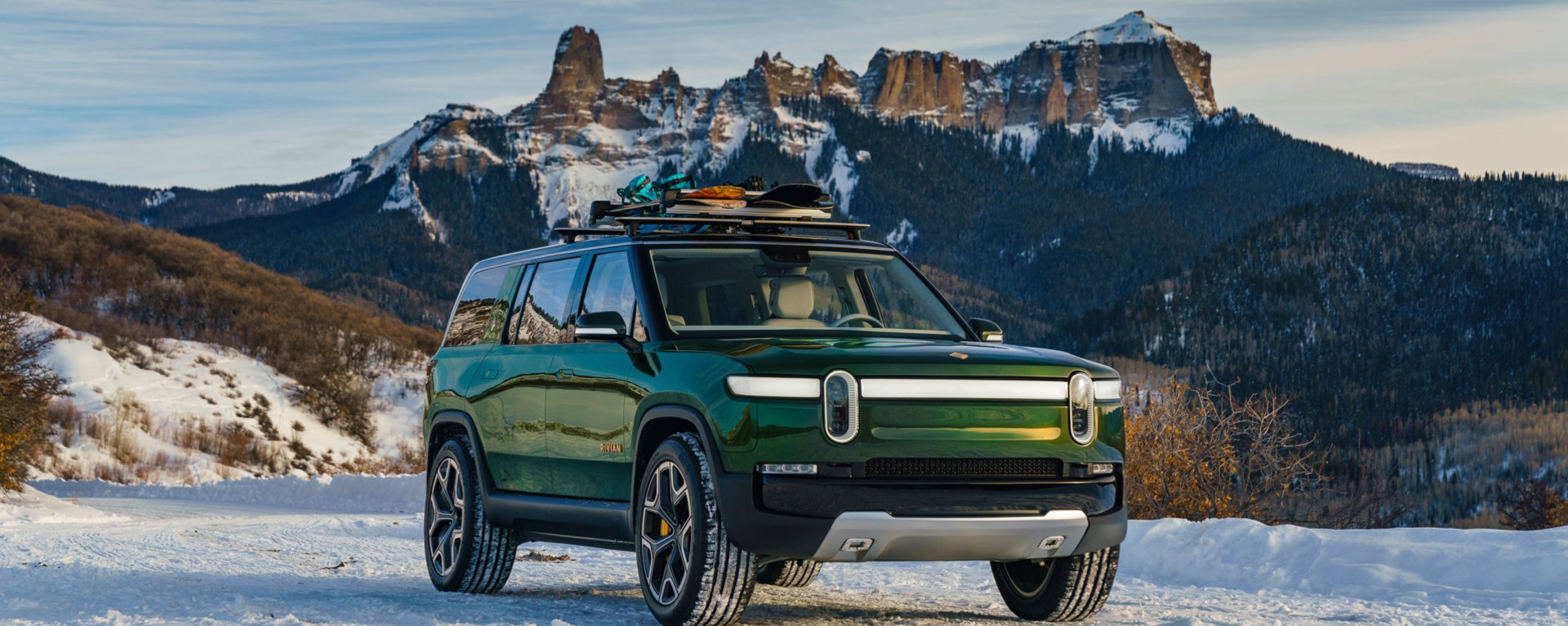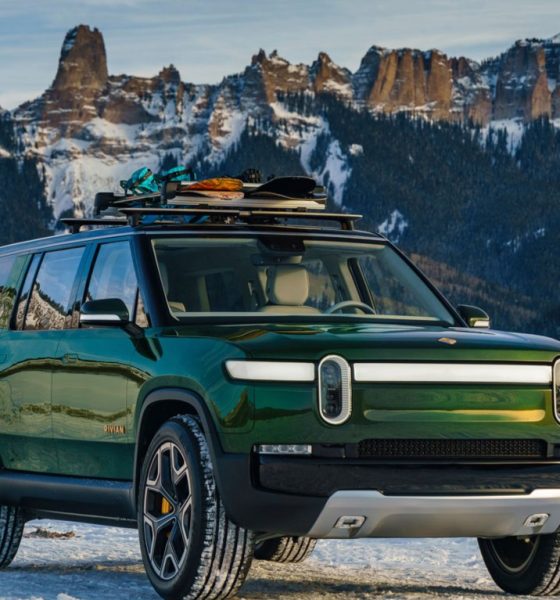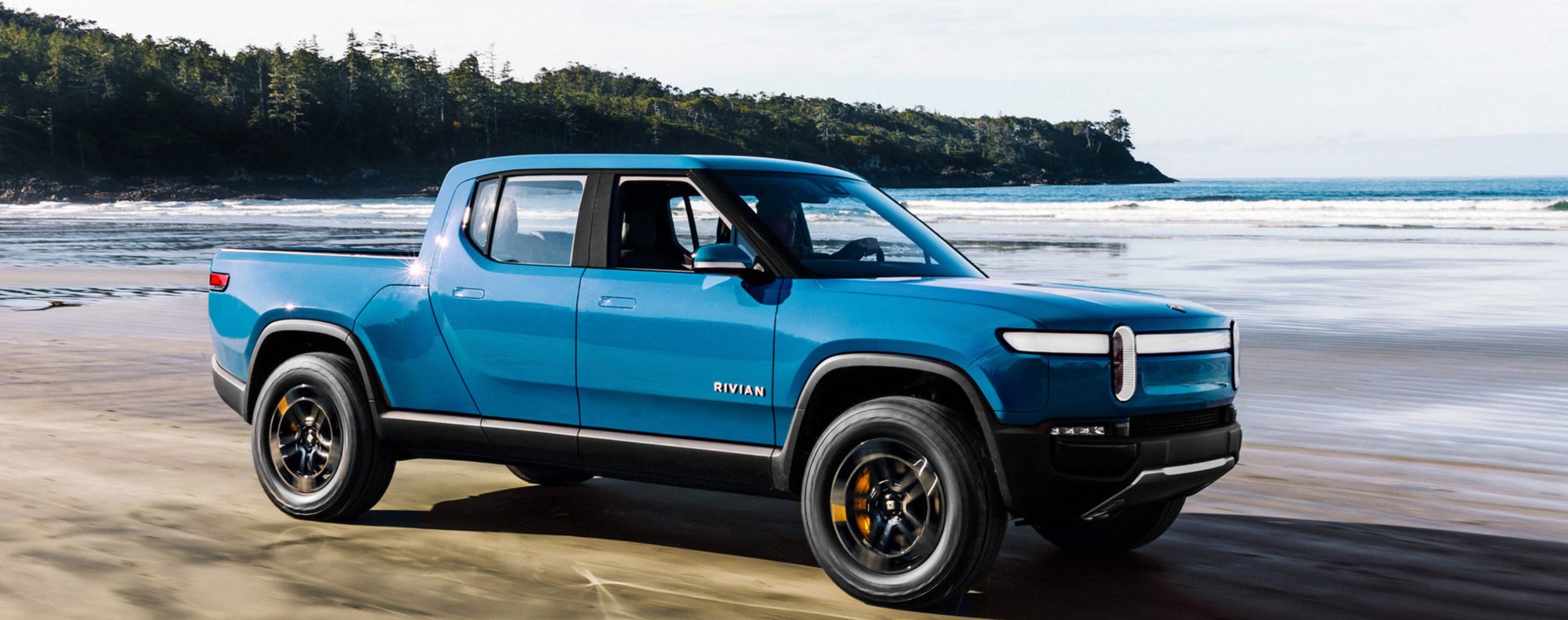

News
Rivian partners with Meridian Audio for premium sound in its EVs
Electric vehicle company Rivian has chosen British audio pioneer Meridian Audio to provide branded audio systems for its electric vehicle platform. The two companies began their partnership more than a year ago, but it became public after the two companies announced the partnership on Tuesday, March 2nd.
Rivian is planning to launch its first vehicles in just a few months, with its first deliveries scheduled for June 2021. With its all-electric R1T pickup truck heading to customers in such a short period of time, Rivian has finally chosen a premium sound supplier for its vehicles in Meridian. Meridian has been around since 1977 and has a reputation for delivering premium quality sound systems in both residential, commercial, and automotive settings.
The two companies have been in collaboration for over a year, according to a press release from Meridian. Rivian and Meridian have been working on designing, engineering, and turning high-performance audio systems that will “embody Rivian’s ambitions to rethink mobility and shape the way people live, work, and play for the better.” Rivian is the first all-electric automaker to come forward that primarily focuses on the outdoor experience with its vehicles. While other automakers focus on the luxury segment, Rivian is delivering vehicles that will fit the bill for someone who plans to spend their time in the wilderness and in the great outdoors, where the company’s all-electric powertrains will thrive in nearly any setting thanks to its quad-motor powertrain.
The partnership is welcomed by John Buchanan, CEO of Meridian, who had high praise for Rivian’s mission to promote all-electric passenger transportation while keeping sustainability and environmental consciousness in mind.
Buchanan said:
“We were thrilled to have won the opportunity to work with such an exciting new company and to have been selected to engineer the in-car audio experiences for Rivian’s electric vehicles, Meridian is demonstrating itself to be the premium audio brand and technology partner of choice for automotive brands seeking market-leading sound solutions. Rivian’s goal to redefine expectations in the automotive industry through the human-centric and nature-conscious application of innovation and technology makes Meridian the perfect partner for them. We are delighted that the renowned Meridian sound experience now extends to the Rivian R1T and R1S electric vehicles, and we are excited about the future with Rivian.”
Credit: Rivian and Meridian Audio
Meridian’s design for Rivian’s vehicles is set to ensure that the audio will actually enhance the entertainment experience for every occupant within the vehicle. “Meridian has designed an audio system that provides both the driver and the passengers with a truly immersive listening experience,” Buchanan said. Meridian developed certain technologies that are tailored for the future automotive market, which could be filled with electric vehicles within the next decade. Among the key features of Meridian’s powerful audio systems, four specific technologies are tailored for the R1T and R1S specifically.
Meridian Digital Precison
Meridian Digital Precision technology ensures that all the finest details and emotions of the performance are delivered, regardless of the format used.
Meridian RE-Q
Meridian RE-Q is a Cabin Correction technology that removes unwanted cabin resonances, preserving the natural rhythm and timing of the performance. Bass becomes smooth, deep, and balanced.
Meridian Horizon
Meridian Horizon is an upmixing technology providing immersive multichannel audio from two-channel stereo content, configured for any loudspeaker layout. Providing a truly enveloping and immersive listening experience.
Meridian Intelli-Q
Meridian Intelli-Q is Data-Driven Equalisation that optimizes audio playback within the cabin based on data available from the vehicle such as speed, window state, occupancy, and audio source. This ensures all occupants in the vehicle enjoy optimal audio experience at all times.
Meridian’s full press release announcing its official partnership with Rivian is available here.

Elon Musk
Elon Musk’s X will start using a Tesla-like software update strategy
The initiative seems designed to accelerate updates to the social media platform, while maintaining maximum transparency.

Elon Musk’s social media platform X will adopt a Tesla-esque approach to software updates for its algorithm.
The initiative seems designed to accelerate updates to the social media platform, while maintaining maximum transparency.
X’s updates to its updates
As per Musk in a post on X, the social media company will be making a new algorithm to determine what organic and advertising posts are recommended to users. These updates would then be repeated every four weeks.
“We will make the new 𝕏 algorithm, including all code used to determine what organic and advertising posts are recommended to users, open source in 7 days. This will be repeated every 4 weeks, with comprehensive developer notes, to help you understand what changed,” Musk wrote in his post.
The initiative somewhat mirrors Tesla’s over-the-air update model, where vehicle software is regularly refined and pushed to users with detailed release notes. This should allow users to better understand the details of X’s every update and foster a healthy feedback loop for the social media platform.
xAI and X
X, formerly Twitter, has been acquired by Elon Musk’s artificial intelligence startup, xAI last year. Since then, xAI has seen a rapid rise in valuation. Following the company’s the company’s upsized $20 billion Series E funding round, estimates now suggest that xAI is worth tens about $230 to $235 billion. That’s several times larger than Tesla when Elon Musk received his controversial 2018 CEO Performance Award.
As per xAI, the Series E funding round attracted a diverse group of investors, including Valor Equity Partners, Stepstone Group, Fidelity Management & Research Company, Qatar Investment Authority, MGX, and Baron Capital Group, among others. Strategic partners NVIDIA and Cisco Investments also continued support for building the world’s largest GPU clusters.
News
Tesla FSD Supervised wins MotorTrend’s Best Driver Assistance Award
The decision marks a notable reversal for the publication from prior years, with judges citing major real-world improvements that pushed Tesla’s latest FSD software ahead of every competing ADAS system.

Tesla’s Full Self-Driving (Supervised) system has been named the best driver-assistance technology on the market, earning top honors at the 2026 MotorTrend Best Tech Awards.
The decision marks a notable reversal for the publication from prior years, with judges citing major real-world improvements that pushed Tesla’s latest FSD software ahead of every competing ADAS system. And it wasn’t even close.
MotorTrend reverses course
MotorTrend awarded Tesla FSD (Supervised) its 2026 Best Tech Driver Assistance title after extensive testing of the latest v14 software. The publication acknowledged that it had previously criticized earlier versions of FSD for erratic behavior and near-miss incidents, ultimately favoring rivals such as GM’s Super Cruise in earlier evaluations.
According to MotorTrend, the newest iteration of FSD resolved many of those shortcomings. Testers said v14 showed far smoother behavior in complex urban scenarios, including unprotected left turns, traffic circles, emergency vehicles, and dense city streets. While the system still requires constant driver supervision, judges concluded that no other advanced driver-assistance system currently matches its breadth of capability.
Unlike rival systems that rely on combinations of cameras, radar, lidar, and mapped highways, Tesla’s FSD operates using a camera-only approach and is capable of driving on city streets, rural roads, and freeways. MotorTrend stated that pure utility, the ability to handle nearly all road types, ultimately separated FSD from competitors like Ford BlueCruise, GM Super Cruise, and BMW’s Highway Assistant.
High cost and high capability
MotorTrend also addressed FSD’s pricing, which remains significantly higher than rival systems. Tesla currently charges $8,000 for a one-time purchase or $99 per month for a subscription, compared with far lower upfront and subscription costs from other automakers. The publication noted that the premium is justified given FSD’s unmatched scope and continuous software evolution.
Safety remained a central focus of the evaluation. While testers reported collision-free operation over thousands of miles, they noted ongoing concerns around FSD’s configurable driving modes, including options that allow aggressive driving and speeds beyond posted limits. MotorTrend emphasized that, like all Level 2 systems, FSD still depends on a fully attentive human driver at all times.
Despite those caveats, the publication concluded that Tesla’s rapid software progress fundamentally reshaped the competitive landscape. For drivers seeking the most capable hands-on driver-assistance system available today, MotorTrend concluded Tesla FSD (Supervised) now stands alone at the top.
News
Elon Musk’s Grokipedia surges to 5.6M articles, almost 79% of English Wikipedia
The explosive growth marks a major milestone for the AI-powered online encyclopedia, which was launched by Elon Musk’s xAI just months ago.

Elon Musk’s Grokipedia has grown to an impressive 5,615,201 articles as of today, closing in on 79% of the English Wikipedia’s current total of 7,119,376 articles.
The explosive growth marks a major milestone for the AI-powered online encyclopedia, which was launched by Elon Musk’s xAI just months ago. Needless to say, it would only be a matter of time before Grokipedia exceeds English Wikipedia in sheer volume.
Grokipedia’s rapid growth
xAI’s vision for Grokipedia emphasizes neutrality, while Grok’s reasoning capabilities allow for fast drafting and fact-checking. When Elon Musk announced the initiative in late September 2025, he noted that Grokipedia would be an improvement to Wikipedia because it would be designed to avoid bias.
At the time, Musk noted that Grokipedia “is a necessary step towards the xAI goal of understanding the Universe.”
Grokipedia was launched in late October, and while xAI was careful to list it only as Version 0.1 at the time, the online encyclopedia immediately earned praise. Wikipedia co-founder Larry Sanger highlighted the project’s innovative approach, noting how it leverages AI to fill knowledge gaps and enable rapid updates. Netizens also observed how Grokipedia tends to present articles in a more objective manner compared to Wikipedia, which is edited by humans.
Elon Musk’s ambitious plans
With 5,615,201 total articles, Grokipedia has now grown to almost 79% of English Wikipedia’s article base. This is incredibly quick, though Grokipedia remains text-only for now. xAI, for its part, has now updated the online encyclopedia’s iteration to v0.2.
Elon Musk has shared bold ideas for Grokipedia, including sending a record of the entire knowledge base to space as part of xAI’s mission to preserve and expand human understanding. At some point, Musk stated that Grokipedia will be renamed to Encyclopedia Galactica, and it will be sent to the cosmos.
“When Grokipedia is good enough (long way to go), we will change the name to Encyclopedia Galactica. It will be an open source distillation of all knowledge, including audio, images and video. Join xAI to help build the sci-fi version of the Library of Alexandria!” Musk wrote, adding in a later post that “Copies will be etched in stone and sent to the Moon, Mars and beyond. This time, it will not be lost.”








